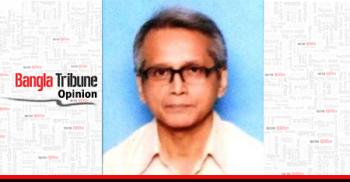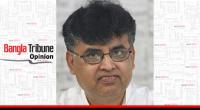 With barely a month to go for the first phase of India’s general elections on April 11, no one is feeling more frustrated and angrier than West Bengal Chief Minister Mamata Banerjee. The reason: her ambitious concept of herding all parties to oppose the ruling Bharatiya Janata Party(BJP ) in a grand alliance, so as to ensure a comprehensive political burial for Prime Minister Narendra Modi, has proved a non starter. Clearly, her barely concealed obsession to play the decisive king maker in the world’s largest democracy in 2019 will remain unfulfilled, unless some miraculous changes occur in India’s political landscape in the days ahead.
With barely a month to go for the first phase of India’s general elections on April 11, no one is feeling more frustrated and angrier than West Bengal Chief Minister Mamata Banerjee. The reason: her ambitious concept of herding all parties to oppose the ruling Bharatiya Janata Party(BJP ) in a grand alliance, so as to ensure a comprehensive political burial for Prime Minister Narendra Modi, has proved a non starter. Clearly, her barely concealed obsession to play the decisive king maker in the world’s largest democracy in 2019 will remain unfulfilled, unless some miraculous changes occur in India’s political landscape in the days ahead.
Her agony is understandable. No one has worked harder in recent months than Banerjee to attack the BJP and its all powerful duopoly of Modi and party President Amit Shah. Never known to mince her words even in public meetings, Banerjee in recent days used language against the pair that bordered on the abusive, often embarrassing even her supposed allies. She hosted leaders of the Indian National Congress (INC) and 20 smaller regional parties all peeved with the BJP, to attend meetings in Kolkata. She also attended similar meetings in Delhi and elsewhere.
To ensure that the BJP is forced to face straight contests in all 543 LS seats --- which most analysts had rejected outright as a pipe dream , the idea being too grandiose (if not absurd !) in a deeply diverse country of 1.2 billion people! – she had met Shiv Sena leaders (allies of the BJP) in Mumbai and visited Odisha Chief Minister Naveen Patnaik (politically neutral) in Bhubaneswar. She requested the Patidar (Patel) leader of Gujarat, Hardik Patel to join her Trinamool Congress (TMC) party. Patel has been opposing the BJP in Gujarat. She wooed Delhi Chief Minister Arvind Kejriwal , telling him to work out a seat adjustment with the INC, its bête noire. She has been advising leaders of the Samajbadi party (SP) in Uttar Pradesh and Laloo Prasad Yadav (RJD) in Bihar. In short she ran from pillar to post, wooing friends and foes in her great, grand ‘Finish the BJP in Unish-2019’) campaign.
At every venue and to every leader, she hammered home her simple one line message: the opposition must engage the BJP in straight, one-against-one contests, which should cook the BJP’s goose for good. After all Modi’s party enjoys only a 31% share of the total votes in the country. Where many parties are in the battle for power, which is the case in most Indian States, she urged upon dominant ruling parties to be liberal and allot more seats to junior partners in the great battle to bury the hated Modi/Shah combo and their despicable party!
With one difference: in states where ruling parties are overwhelmingly powerful (read the TMC in Bengal!) they can dictate the ter of the anti-BJP alliance to smaller parties. She argued that only in this way, regional parties like the TMC, the SP, and the RJD etc could retain their presence and political relevance, leaving a subservient role for the major national opposition party like the INC.
However, her idea found no takers. The INC, fresh from its triumph in the Assembly Elections held in Chhattisgarh, Madhya Pradesh and Rajasthan, not to mention in Karnakata earlier, was understandably loath to play second fiddle to any regional party. Whether with Delhi Chief MInister Arvind Kejriwal (AAP) or the SP and BSP (Mayabati) in Uttar Pradesh or the RJD in Bihar, the INC drove a hard bargain for seats to contest than the more powerful regional parties were willing to concede. The point was the INC , despite its worst ever showing in the LS polls in 2014, where it won a mere 44 seats in a house 543, still won 19.3% of the total votes, second only to the BJP!
As of now, Mamata’s grand opposition to the BJP plan lies in tatters in Bengal itself. Neither the CPI (M) –led Left Front nor the state unit of the INC , showed any inclination to join an anti-BJP coalition led by the TMC; therefore no across- the- board anti BJP unity in 42 LS seats. Switch to Bihar (40 seats). The INC wanted to fight at least 15, but the RJD is not willing to spare more than 10. After all the RJD sees the INC as a junior partner in the state. Therefore no agreement and the INC will fight all 40 seats.
Switch to Bihar (40 seats). The INC wanted to fight at least 15, but the RJD is not willing to spare more than 10. After all the RJD sees the INC as a junior partner in the state. Therefore no agreement and the INC will fight all 40 seats.
Over to Uttar Pradesh (80 seats). Here the opposition front runner, Bahujan Samaj Party(BSP) led by Mayabati ( vote share in UP around 22%) has entered into a strong alliance with the SP . These parties left only two seats for the INC at Amethi and Bareillly , more out of courtesy to Rahul and Sonia Gandhi , the current and former presidents of the INC respectively, than from any other consideration. The INC found this humiliating and announced plans to fight all seats and to hell with anti-BJP unity. The INC has also thrown into the fray the attractive and politically savvy Paryanka Gandhi Vadra into its UP campaign. But relations with SP/BSP combo remain glacially cold.
As for the national capital of Delhi(7 seats), despite Mamata’s almost desperate appeals to the INC and the Aam Admi Party (AAP) of Kejriwal, there has been no alliance, as the INC will fight all seven seats. Ditto in Odisha (21 seats), as Chief Minister Patnaik , the leader of the ruling Biju Janata Dal(BJD) has declared he would maintain his equidistance from both the INC and the BJP and go it alone. As for Assam, (14 seats), again, no opposition unity. Worse, even during ongoing negotiations over an opposition alliance, there has occurred considerable acrimony and a mutual exchange of insults between the INC and regional parties whether in UP, Delhi, Bihar or Punjab (where again, there will be no alliance among opposition parties).
The total number of seats in these states (minus Punjab) adds up to 204. On the other hand, the BJP has finalised seat sharing with the Shiv Sena in Maharashtra (48 seats) and with the Dravida Munnetra Kazhagham (DMK) in Tamil Nadu (23 seats). Which means in 275 out of 543 Lok Sabha seats, the BJP, far from being isolated, will fight from a position of relative strength, against a diverse lot of smaller regional opposition groups and parties, which remain as divided as ever. Worse for the TMC, with seat arrangements still being discussed by the BJP with other like-minded parties, prospects for the opposition, parties, now reeling from the political impact of India’s aerial strike against Pak-based Islamic militants at Balakot, can only worsen, not improve.
A Kolkata-based journalist Ashis Biswas, has worked for the Hindustan Times, Ananda Bazar Patrika, The Hindu and the Outlook magazine during his long career. He has been based in New Delhi, Kolkata and the Northeast and worked in West Asia as well.


